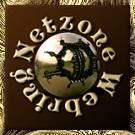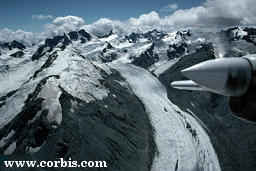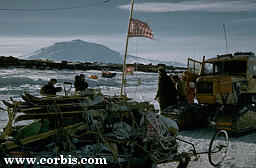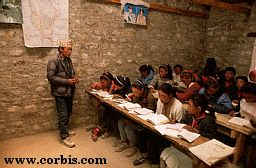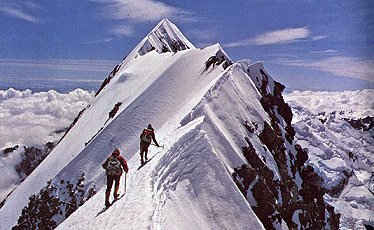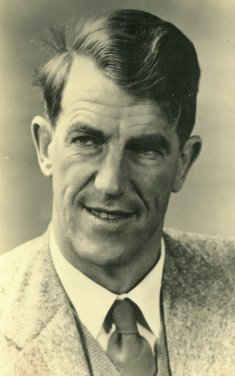![]()
Coasts
Rivers/Lakes
Lowlands/Plains
Geysers/Mud
Glaciers
Mt. Ruapehu
Mt. Cook
White Island
A Maori Legend
![]()
Abbotsford
Aramoana
Ballantynes
Brynderwyns
Cave Creek
Hawkes Bay
H.M.S. Orpheus
Influenza
Mt. Erebus
Mt. Tarawera
Rainbow Warrior
Seacliff Hospital
Tangiwai
Wahine
![]()
Annie Aves
Ata-hoe
Daisy Basham
Jean Batten
Minnie Dean
Mabel Howard
Margaret Mahy
Kath Mansfield
Kate Sheppard
Kiri Te Kanawa
Catherine Tizard
Murray Ball
Charles Goldie
Edmund Hillary
Richard Pearse
Lord Rutherford
Charles Upham
![]()
NZ FAQ--Funny
NZ Links
Credits
"We didn't know if it was humanly possible to reach the top of Mt. Everest. And even using oxygen as we were, if we did get to the top, we weren't at all sure whether we wouldn't drop dead or something of that nature. All the physiologists had warned us that the altitude at the summit of Everest was a very marginal altitude and might be extremely dangerous." --Sir Edmund Hillary. Sir Edmund Hillary was born in 1919 and grew up in Auckland. He made his living in the family business as a beekeeper, but his hobby was mountain climbing. After climbing various mountains in New Zealand, he conquered the Alps, then climbed 11 peaks in the Himalayas, each over 20,000 feet high.
Edmund Hillary first joined Everest expeditions in 1951 and 1952. Then, when an expedition was organised by the Joint Himalayan Committee of the Alpine Club of Great Britain and the Royal Geographic Society he was invited along. All but two of the climbers were forced to turn back by exhaustion at the high altitude. The remaining pair were Hillary and Sherpa Tenzing Norgay, a veteran of five previous Everest trips. On May 29, 1953 at 11:30 a.m. Hillary and Norgay reached the summit and stood on the highest spot on Earth. (29,028 feet above sea level). The pair shhok hands, hugged, then took fifteen minutes to leave mementos. Hillary left behind a crucifix while Tenzing, a buddhist left offerings of chocolate and lollies for the Gods thought to dwell on Everest. People tend to occasionally forget the valued contribution on the expedition of Sherpa Tenzing Norgay of Nepal, without whom Hillary probably would have died. In a hurry to get through an ice fall before darkness fell Hillary went rushing down the mountain without thinking too carefully. He leaped a crevasse landing on a chunk of ice. This promptly broke off sending both Hillary and ice down into the crevasse. Up top, Tenzing thrust his ice axe into the snow, whipped the connecting rope around it, and as the rope came tight Hillary's fall was stopped short.
The conquest of Everest was announced to the British public on the eve of the coronation of Queen Elizabeth II. Edmund Hillary returned to Britain with the other climbers and was knighted by the Queen and inducted into the Order of New Zealand. In 1958 Hillary took part in the first mechanised expedition to the South Pole leading a five-person group by dog sled and snow tractor across 1,200 miles (1,931 km) of Antarctica to the South Pole. This was the first group since 1912 to reach the Pole by overland route. He also continued over the years to organize further mountain-climbing expeditions. One of his more unusual adventures was in 1960 and involved an attempt to search for the abominable snowman. The expedition took binoculars, cameras, tape recorders, and even air rifles with drug-loaded darts so they could capture the creature. Yeti-like footprints were found and followed. In the shade it was found thee tracks resembled those of a small four-footed animal, but where the sunlight had melted the snow the prints were large and monster-like.
A monastery claiming to hold a 200-year-old yeti scalp was visited and after examination the conclusion was that it came from a Tibetan goat. Nevertheless, the scalp was borrowed and sent for scientific analysis. It was declared very old, however there was no doubt it was a fake. Hillary concluded the elusive yeti does not exist and to date no one has proven otherwise. A year later Hillary led an expedition to climb Mt. Makalu (27,790 ft) in Nepal. Hillary climbed as high as Camp Three and then suffered a pounding headache. He moved down to Camp Two however he continued to grow worse. Although he was perfectly rational, speech came out garbled and control of his limbs was significantly reduced. After some days he retreated down the mountain to below 15,000 feet. Medical tests later showed no lasting ill-effects from the climb. By this time his concern with the welfare of the Nepalese people was high. He set out to aid in the development of clinics, hospitals and schools. To date he has helped build twenty-six schools, three airfields, two hospitals, twelve village clinics and two airfields in Nepal. Hygenic waste systems have been established in distant villages and the Nepalese government persuaded to protect the forest and areas surrounding Everest by declaring the land a National Park.
Very sadly, Hillary's wife and youngest daughter Belinda were killed in 1975 when their plane crashed during takeoff. He has since found happiness again and remarried. Another scare occured in 1979 when Hillary received word that someone had died in an expedition climbing Ama Dablam. Among the group of climbers was son Peter. But Peter was alive although he had a broken arm. In 1980 Hillary was asked to assist an expedition planning an assault on the 'impossible' east face of Everest. He agreed despite having increasing troubles at high altitudes. At base camp Hillary started having headaches. Within days the expedition surgeon advised Hillary to return to a lower altitude. The pair walked down to 2,000 feet and after a week Hillary felt better and returned to base camp. This improvement did not last and Hillary once more became ill. This time was worse. He started seeing double, vomiting. , and experiencing terrible chest pain. Within hours he did not know where he was and could not speak clearly. Moves were made for an emergency evacuation to a lower altitude.
On the way they passed the camp where Hillary had spent the week recovering from his previous attack of altitude sickness, but Hillary didn't recognise it. At one point he saw a rock along a stream and thought it was a truck coming to collect them. Then a yak ran wild and cut Hillary on the head with its horn. After returning to New Zealand Hillary's headaches gradually faded away. This was to be Hillary's last expedition in the high Himalayas. Between 1985 and 1989 he was the New Zealand High Commissioner to India and Bangladesh, and also ambassador to Nepal. He holds many awards for his humanitarian works and achievements in exploring. This includes five honorary degrees. Over the years Hillary has written or co-authored 10 books documenting his expeditions and experiences.
|
